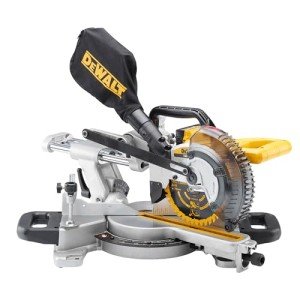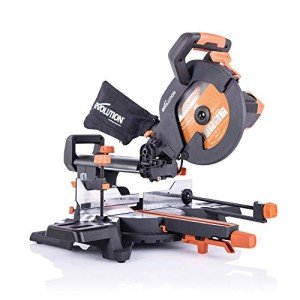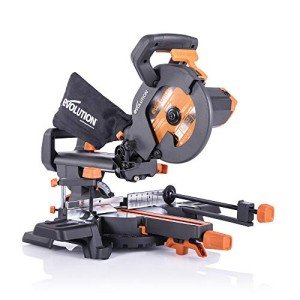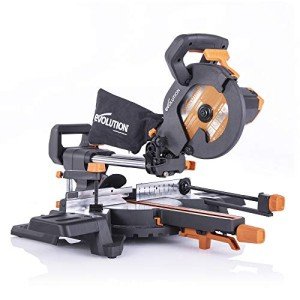When it comes to woodworking and construction, few tools have become as essential as the compound miter saw. This versatile power tool has evolved significantly over the years, embracing cutting technologies that enhance its functionality, particularly in the realm of multi-material cutting. As professionals in the industry require ever more specialized equipment, the need for tools that can seamlessly cut through various materials has never been more pressing. This guide will delve into the evolution of compound miter saws, focusing on their advanced capabilities for cutting different materials, and explore their implications for carpentry and construction professionals.
The Evolution of Compound Miter Saws
1. Birth of the Miter Saw
The origins of the miter saw can be traced back to the early 1970s when it was initially designed for making crosscuts and angled cuts in wood. At that time, the saw was commonly a simple mechanism relying on a circular blade powered by an electric motor. It was primarily used for framing and trim work, providing carpenters with increased accuracy and efficiency.
2. Introduction of Compound Features
As demand for precision increased, manufacturers began to innovate. By the late 1980s, the compound miter saw was introduced, combining the functionalities of miter and bevel cutting in one tool. This innovation enabled users to create complex cuts in a single motion, enhancing productivity.
3. Technological Innovations
The 2000s saw rapid developments in technology, introducing laser guides, digital displays, and various power settings that allowed users to work with precision across multiple materials. Dust collection systems were also introduced, addressing cleanup concerns on job sites while improving visibility during cuts.
4. The Multi-Material Era
The most significant advancement in the realm of compound miter saws has been the ability to cut multiple materials effectively. Modern miter saws are equipped with specialized blades designed to tackle not just wood, but also aluminum, plastic, and even composite materials. This transition is complimentary to the rising importance of sustainable materials in construction practices.
Benefits of Multi-Material Cutting
The capability of cutting multiple materials with one tool leads to several benefits, including:
- Versatility: Professionals can use a single saw for a variety of jobs, eliminating the need for multiple cutting tools.
- Cost-Efficiency: Investing in a multi-material compound miter saw can save significant costs on equipment by reducing the need for specialized saws.
- Time Savings: Efficiently switching between materials can drastically reduce project time and overall labor costs.
- Quality of Cuts: Specialized blades ensure clean, precise cuts, minimizing waste and improving the overall quality of the finished product.
Understanding the Anatomy of a Multi-Material Compound Miter Saw
To maximize the benefits offered by a multi-material compound miter saw, it's essential to understand its key components:
| Component | Function |
|---|---|
| Blade | Varies in design according to material; includes carbide-tipped options for durability. |
| Motor | Higher horsepower motors allow for cutting tougher materials. |
| Bevel and Miter Adjustments | Enable users to set precise angles for specific cuts. |
| Laser Guides | Help to mark out cuts for enhanced accuracy. |
| Dust Collection | Minimizes debris and keeps the workspace clean. |
Incorporating the Right Blades
Different materials require different blades for optimal cutting performance. Here’s a list of suitable blades for various materials:
Wood
- Fine-toothed saw blades are best for achieving smooth cuts. These blades typically have a higher tooth count.
Aluminum
- Carbide-tipped blades with fewer teeth can tackle softer materials like aluminum, providing smooth cuts without damaging the edges.
Plastic
- Blades designed for plastic usually feature a unique tooth geometry that avoids melting during cuts.
Composite Materials
- Specialized blades that combine fine and coarse teeth work effectively on composite materials, helping to prevent chipping and splintering.
Frequently Asked Questions (FAQs)
1. What is the difference between a miter saw and a compound miter saw?
A basic miter saw only allows cuts at various angles, while a compound miter saw can also tilt the blade for bevel cuts in addition to miter cuts.
2. Can I use a standard wood blade to cut other materials?
While it is possible, it isn’t recommended. Each material requires specific blade designs to ensure clean cuts and to prevent damage to the blade or the material.
3. How do I maintain my compound miter saw for multi-material cutting?
Regular maintenance includes keeping the blade sharp, cleaning the dust collection system, and ensuring the motor is properly lubricated and free of debris.
4. Are there specific safety precautions I should follow?
Always wear safety goggles and ear protection while operating the saw. These protective measures will help guard against potential injuries from flying debris and excessive noise.
5. What features should I look for when buying a multi-material compound miter saw?
Consider the motor power, blade versatility, available adjustments for miter and bevel, a dust collection system, and additional features like laser guides for precision cuts.
The evolution of the compound miter saw, particularly its ability to cut multiple materials, represents a significant leap forward in the woodworking and construction industries. By understanding the tool's advancements and maintaining a high level of safety and efficiency, carpenters and builders can navigate multi-material projects with ease and accuracy. As technology continues to advance, users can expect even more enhancements to these essential tools that will shape the future of construction and woodworking. With the right knowledge and equipment, professionals can elevate their craftsmanship to unprecedented levels.






